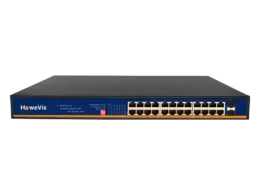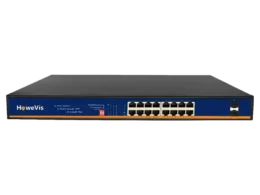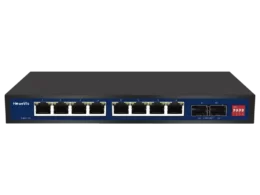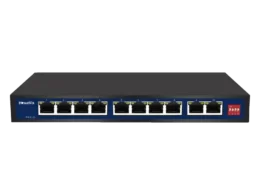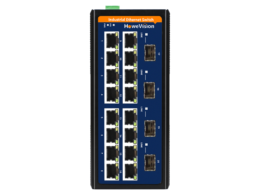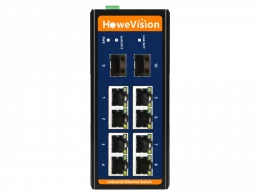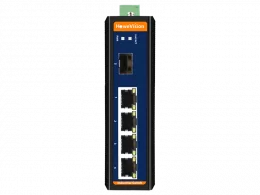What is a PoE Cable?
Power over Ethernet (PoE) is a cable that integrates data transmission and power transmission. It gathers various kinds of remote devices into a single line. It removes the need for an extra Ethernet line to operate a device.
A networking switch/router or a PoE injector provides the PoE power. It offers up to 90W of power budget to devices at a most incredible range of 100m.
The IEEE 802.3af and 802.3at are the standard specifications of PoE. The IEEE establishes these. They define how network devices must function to encourage compatibility across devices.
Both power source equipment (PSE), powered devices (PDs) are examples of PoE-capable electronics. PSE is a device that transfers power, while a PD is a powering unit. The majority of PSEs are networking switches or PoE injectors. They build to operate with non-PoE switches.
Various advantages of PoE Technology
Power over Ethernet (PoE) helps install remote or exterior equipment without any need for connection for the AC power.
Due to this, the power is distributed to many locations without the need for extra electrical structures. Power plugs at each destination are also not needed.
It is possible to install devices without the help of an electrician. PoE-based solutions are more cost-effective and productive.
The primary advantages of PoE are, decreased installation costs, installation security, quick deployments. Data-gathering capacities and productivity increases are all benefits of PoE. End users can connect PoE-capable devices to existing networks. They can even create new ones with comfort and convenience.
With only one Ethernet connection, PoE can power VoIP phones and wireless access points. PoE can power LED lighting systems, security goods, industrial controls, and PoE network switches. In reality, PoE helps in operating at least a third of today’s billions of Internet of Things (IoT) equipment. PoE allows powering smart homes and IP security systems. Digital signage and industry-specific accuracy monitoring sensors are all dependent on PoE technologies.
One of the most significant advantages of PoE is the labor cost reduction. This procedure happens by finishing the need to run individual power cables. Also, be eliminating plugs wherever a device requires power. PoE is safer than traditional electrical cable. Thus, many individuals and businesses use it to link to an outdoor source of energy.
Is there a need to get Special Cables for PoE?
Both regular and PoE-enabled local area networks use the same wires. Hence specialized cables aren’t necessary when employing PoE technology. A Cat 5e or more outstanding standard cable with four twisted pairs of the copper cable would usually suffice. But electricity requires two pairs of wires: an opposing team and a cheerful couple.
How far a distance can a PoE cable cover?
Irrespective of where the power is delivered, PoE can transfer 100 meters from the hub or switch to the NIC. The problem isn’t with the energy; it’s with the Ethernet cabling specifications. The process restricts the total cable length to 100 meters.
A PoE switch can transfer primary data through Ethernet over a range of up to 100 meters. Yet, PoE Ethernet Extender can stretch that range to up to 4000 feet. More extended reach offers central authority over a vast region. Such as networks covering corporations, universities, and substantial retail businesses like shopping malls.
Power over Ethernet (PoE) will only operate the device if there is enough voltage at the end of the cable carried to activate it. The most extended range a gadget can be powered by depends on the access point and the voltages it requires. IEEE also provides the standard voltage specifications.
Besides the voltage generated by the power source and the wire’s reliability for extended PoE runs, Cat6 cable is preferable. You should use a 24V power source used for passive PoE.
24V passive PoE can power an OM series AP for up to 50 meters (100-150 ft.). The range limitation for the 802.3af and 802.3at PoE specifications is 100 meters or 328 feet. The mentioned can also the bandwidth limit for data transfer for Ethernet cables.
Hence, the most extended range between the Ethernet source and the Ethernet client is 100 meters (328 feet). Please keep in mind that the mentioned is not the same as the most length of an Ethernet wire. An Ethernet source, such as a PoE switch, is an end span.
Since a PoE mid-span is an energy hub and not a data hub, it cannot be used as an Ethernet source. Ethernet clients, such as an Axis camera or video encoder, can be PoE or non-PoE devices.
These PoE cables are extremely efficient working and versatile in their uses. The most extended range matches the longest cable length. The mentioned happens only while using a PoE switch and a PoE-equipped camera of 100 m.
You must check the increased range for the number of cables utilized to approach the Ethernet client from the Ethernet supply. That should happen after you use a mid-span and a splitter.
Do you need a PoE extender for better performance?
If you want to expand Ethernet LAN signals beyond 328 feet, you can use a PoE extension. These create in 2005. They allow devices such as PoE Wi-Fi access points and PoE IP cameras to receive long-distance powering.
An individual PoE cable has the most length of 100 meters. However, PoE can operate any device at any distance. As long as enough energy is available at the supply to power the device at the other end of the cable, it can occur.
The voltage necessary to power the system determines the actual range a PoE cable may go. It is also dependent on the wire’s quality.
Most customers use a Cat 6 cable for longer runs and a Cat 5 cable for shorter runs. A 24V power source is often required for a short run, whereas a 48V power source often needs a long run. Thus, the cable will not be able to supply adequate power to the unit.

